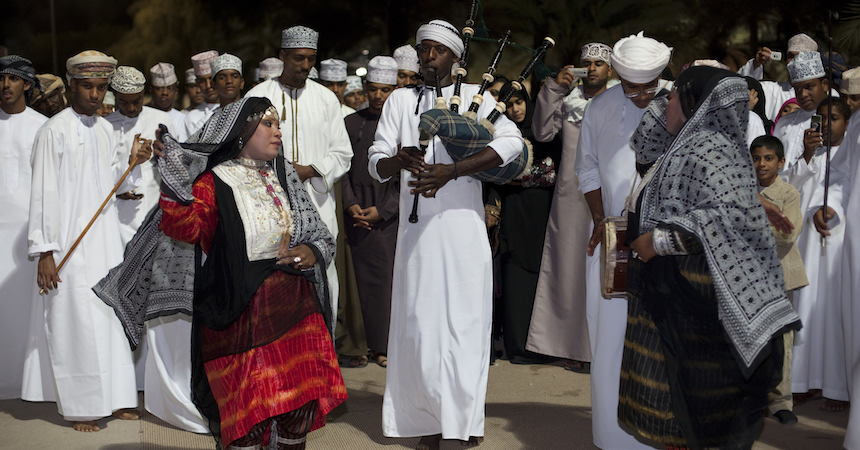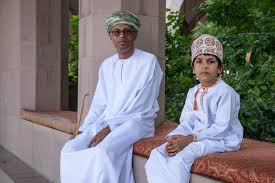Oman, a country known for its rich culture, stunning landscapes, and warm hospitality, has a traditional clothing style that reflects its history, climate, and identity. Understanding Omani clothing is not just about fabric and design it’s about exploring centuries of tradition, social norms, and artistic expression. The attire worn by Omanis represents pride, elegance, and respect, making it a key part of the nation’s identity.
The Essence of Omani Traditional Clothing
Omani clothing is more than just attire; it is a symbol of respect, modesty, and cultural pride. The garments are designed to suit the hot desert climate while maintaining elegance and individuality. Traditional outfits are worn daily by many Omanis, especially in rural areas, and are also an essential part of ceremonies, festivals, and official gatherings.
The clothing reflects Oman’s diverse geography from coastal towns to desert villages—and each region has subtle differences in style, embroidery, and accessories. The designs and colors tell stories about social status, profession, and even family heritage, making every outfit deeply meaningful.
Men’s Traditional Clothing in Oman
Omani men traditionally wear a garment called the dishdasha, a long, ankle-length robe that comes in a variety of colors. White is most common, reflecting the heat of the sun, but darker or brighter shades are also popular for special occasions. The dishdasha is simple in design yet carries immense cultural significance.
A unique feature of the dishdasha is the kumma, an embroidered cap often worn underneath the turban-like massar. The massar is a symbol of pride and is wrapped elegantly around the head in distinct styles that vary by region. The embroidery on the kumma is intricate, showcasing Oman’s rich heritage in needlework.
Men also accessorize with a traditional dagger known as the khanjar, which is worn on the belt during formal events. The khanjar is not just decorative it represents bravery, honor, and family heritage, making it a cherished heirloom passed down through generations.

Women’s Traditional Clothing in Oman
Omani women wear clothing that combines modesty with vibrant beauty. The most common traditional garment is the abaya, a long black robe often adorned with intricate embroidery, especially along the sleeves and hem. Underneath, women may wear colorful dresses or skirts that add a hidden layer of beauty to the ensemble.
Headscarves, called lihaf, are often worn to cover the hair, though the style and color may vary depending on personal preference, region, or occasion. For formal events, women often wear brightly colored dresses with gold or silver jewelry, reflecting their family status and cultural pride.
Jewelry plays a significant role in Omani women’s attire. Necklaces, earrings, and bracelets are not only ornamental but also signify wealth, heritage, and identity. The combination of fabric, embroidery, and accessories creates a look that is both sophisticated and culturally resonant.
Fabrics and Embroidery: A Blend of Art and Function
Omani traditional clothing is made from fabrics that are lightweight, breathable, and suitable for the country’s hot climate. Cotton and linen are commonly used for daily wear, while silk and other fine materials are reserved for special occasions.
Embroidery is a central feature of Omani clothing. The patterns are often geometric or floral, representing centuries-old traditions. Men’s kumma caps feature dense, symmetrical embroidery, while women’s abayas may have flowing, decorative threads that enhance elegance. These patterns are not merely decorative—they reflect tribal affiliation, regional identity, and family history.
Colors and Their Significance
Color plays an important role in Omani traditional clothing. White is favored for men’s dishdashas due to its simplicity and suitability for warm weather. Brighter colors and darker tones are often reserved for formal occasions or religious celebrations.
For women, colors range from soft pastels to bold, vibrant shades. Each color carries meaning: red may symbolize joy and celebration, while black often signifies formality and dignity. By choosing specific colors, Omanis communicate subtle social messages and respect for tradition.
Regional Variations in Omani Attire
Oman’s diverse geography has influenced the evolution of regional clothing styles. Coastal regions, influenced by trade and the sea, may feature lighter fabrics and more colorful embroidery. Desert regions, on the other hand, focus on practical designs that protect from sun and sand, with simpler decorations.
The way the massar is wrapped, the style of embroidery on women’s dresses, and even the choice of jewelry can indicate which region an individual comes from. These regional distinctions enrich the cultural tapestry of Oman and preserve centuries of local tradition.
Modern Influences on Traditional Clothing
While Omanis deeply value their heritage, modern influences have also found a place in traditional attire. Designers are blending traditional embroidery with contemporary fabrics, creating garments that honor the past while appealing to modern tastes.
Younger generations often experiment with colors, textures, and accessories, while still maintaining the essence of Omani culture. This evolution keeps traditional clothing alive, relevant, and fashionable, ensuring that Oman’s heritage continues to thrive in a globalized world.

Clothing in Festivals and Celebrations
Omani traditional clothing becomes particularly vibrant during festivals, weddings, and national celebrations. Men proudly wear their dishdashas with khanjars, while women adorn themselves in elaborate dresses and jewelry.
During these events, clothing is not just about aesthetics; it’s a reflection of respect for tradition, community, and family values. People often spend months preparing garments, choosing embroidery, and coordinating colors to honor the occasion, making each event a visually stunning celebration of heritage.
Preserving the Legacy of Omani Clothing
Efforts to preserve Omani traditional clothing are evident in cultural institutions, museums, and local markets. Many Omanis continue to handcraft embroidery, teach younger generations, and celebrate traditional attire during national events.
Fashion shows and exhibitions have also helped spread awareness about Omani clothing, highlighting its beauty and significance. By embracing both tradition and innovation, Oman ensures that its clothing remains a vibrant part of its cultural identity.
The Symbolism Behind Omani Attire
Every aspect of Omani clothing holds meaning. From the embroidery on a kumma to the drape of a massar, each detail tells a story of heritage, pride, and social respect. Men’s khanjars symbolize courage, while women’s jewelry and abayas signify elegance, wealth, and cultural pride.
Omani traditional clothing is more than fabric and threads it is an expression of identity, values, and the country’s rich history. Wearing these garments connects Omanis to their ancestors and strengthens their sense of belonging in a rapidly changing world.
Conclusion
Oman’s traditional clothing is a harmonious blend of function, art, and cultural pride. It reflects the country’s history, geography, and social values, while continuing to evolve with modern influences. Whether it’s the elegance of a dishdasha, the artistry of a kumma, or the vibrancy of a women’s abaya, Omani attire stands as a powerful symbol of heritage and identity.
Understanding Omani clothing offers more than fashion insight it provides a window into the heart of Oman, where tradition, respect, and beauty coexist in perfect harmony. The preservation and appreciation of these garments ensure that Oman’s rich cultural legacy will continue to inspire generations for years to come.
Do follow Gulf Magazine on Instagram.
Also Read – Omani Architecture: A Timeless Reflection of History and Tradition



